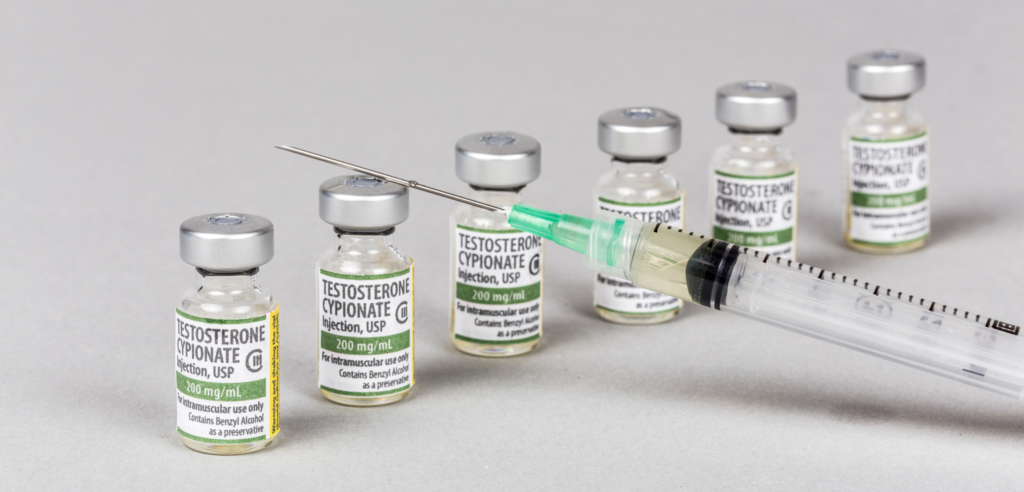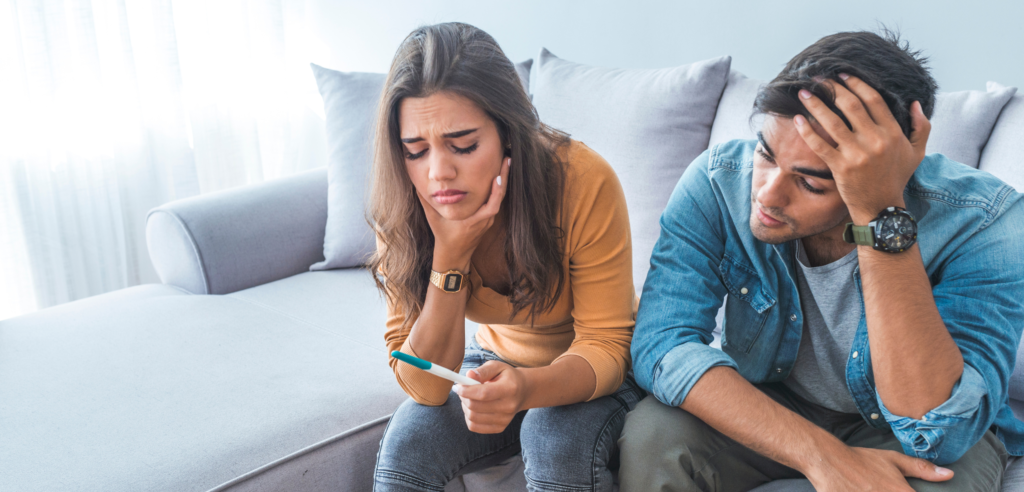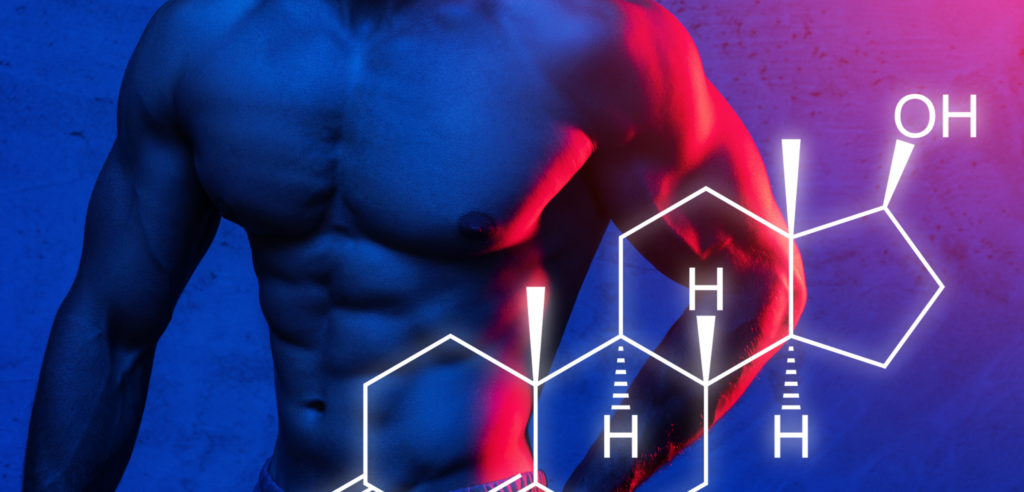Enclomiphene Citrate and TRT.
Testosterone Replacement Therapy (TRT) has long been a beacon of hope for men with hypogonadism.
This condition, characterized by low testosterone levels, can have significant impacts on the quality of life for sufferers.
Hypogonadism not only affects physical well-being, but can also lead to symptoms such as fatigue, loss of muscle mass, reduced libido, and concentration problems.
TRT, which relies on the external supply of testosterone, has been an effective solution for many.
Men who have undergone this therapy have often reported regaining energy, vigor, and a general sense of well-being, as if they had regained a lost part of themselves.
However, as is the case in every field of medicine, science never stops.
Research is always looking for new solutions, more effective and safer ways to deal with various medical conditions.
And it is in this context of continuous evolution that Enclomiphene Citrate has made its way, emerging as a promising alternative to traditional TRT.
Unlike TRT, which introduces testosterone from the outside, Enclomiphene Citrate takes a different approach: it stimulates the body to produce testosterone naturally.
Basically, instead of directly supplying the missing hormone, encourages the body to produce it itself.
This mechanism of action could lead to several benefits.
First and foremost, testosterone production more in line with the body’s natural rhythms, which could result in a more balanced regulation.
Also, being a less “invasive” approach, it could reduce the risk of side effects associated with direct testosterone intake.
But what makes Enclomiphene so special?
And how does it compare with traditional TRT methods?
In this article, we will delve into the world, exploring its origins, how it works, and its potential implications for the future of TRT.
We will review clinical studies, patient testimonials, and the latest research to provide a comprehensive overview of this revolutionary alternative to testosterone.
Get ready for a journey into the future of endocrinology medicine, where innovation and science come together to create increasingly advanced and personalized solutions.

Testosterone Replacement Therapy (TRT)
Testosterone Replacement Therapy (TRT) has been widely used to treat men with low testosterone levels, offering them the chance to improve their quality of life.
However, like any medical treatment, TRT is not without potential complications and side effects.
One of the most critical aspects of TRT is its ability to suppress endogenous testosterone production.
When testosterone is introduced from outside, the body stops producing testosterone on its own through a mechanism that is called a negative feedback signal.
To better understand this mechanism, we can compare it to a thermostat in the home heating system.
Imagine that the thermostat is set to a certain temperature.
When the temperature in the room falls below that setting, the thermostat “senses” the change and activates the heating system.
Once the desired temperature is reached, the thermostat again senses the change and turns off the heating.
This keeps the room temperature constant and in the desired range.
The body’s endocrine system functions similarly through feedback mechanisms.
In the context of physiological testosterone production, the mechanism works in this way:
- Testosterone Production:
Leydig cells in the testes produce testosterone in response to a hormone called LH (luteinizing hormone), which is secreted by the pituitary gland.
- Detection of Testosterone Levels in the Blood:
The body constantly monitors testosterone levels in the bloodstream.
- Negative Feedback:
When testosterone levels reach or exceed a certain point, the pituitary gland “senses” this and reduces LH production.
With less LH available, the testes are stimulated less and, as a result, produce less testosterone.
- External Introduction of Testosterone:
When testosterone is introduced from the outside (as in TRT), testosterone levels in the body increase.
This causes the pituitary gland to produce less LH.
As a result, the testes reduce or stop producing endogenous testosterone.
In summary, the negative feedback mechanism ensures that the body maintains testosterone levels within a certain range.
When testosterone is introduced from outside, this balance is disrupted, leading to suppression of natural testosterone production.
This reaction can have serious repercussions on male fertility.
In fact, suppression of natural testosterone production can lead to a significant reduction in sperm production.
For men of reproductive age who wish to become fathers, this can pose a serious obstacle.
The prospect of compromising one’s ability to have children can be a considerable concern and may cause one to consider whether to begin or continue therapy.

But fertility is not the only problem.
Testosterone Replacement Therapy (TRT) is a medical solution used to treat men with low testosterone levels.
However, like any medical treatment, it has a number of potential side effects that can vary in severity and impact on the patient’s quality of life.
Here is a detailed overview of these effects:
Water Retention:
- This is one of the most common side effects associated with TRT.
- It can manifest with symptoms such as swelling, particularly in extremities such as the hands and feet.
- Excessive fluid accumulation can also lead to increased body weight.
- In more severe situations, water retention can elevate blood pressure, increasing the risk of hypertension, a condition that can have serious consequences for cardiovascular health.
Increased Hematocrit:
Hematocrit represents the percentage of red blood cells in the blood.
An excessive increase in hematocrit can make the blood more viscous.
This increased viscosity can lead to an increased risk of clotting, with potential serious complications such as:
- Deep vein thrombosis: formation of a clot in a deep vein, often in the legs.
- Pulmonary embolism: when a clot breaks loose and travels to the lungs, blocking one of the pulmonary arteries.
Aggravation of Pre-existing Conditions:
TRT can exacerbate some medical conditions already present in an individual such as Sleep Apnea:
- This is a condition in which there are temporary interruptions in breathing during sleep.
- These interruptions can last from a few seconds to several minutes and can occur many times in a night.
- Men with sleep apnea who undergo TRT may experience an increase in the frequency and severity of these episodes of interrupted breathing.
- It is essential that men with a diagnosis of sleep apnea or with suspicious symptoms consult a physician before starting TRT.
In conclusion, while TRT may offer significant benefits for many men, it is critical to be aware of the potential risks and carefully monitor any side effects or changes in health during treatment.
Can Enclomiphene be a better alternative to TRT?
The mechanism of action of Enclomiphene Citrate is fascinating and is an example of how science and medicine can interact with the delicate hormonal balances in the human body.
Is a compound that has attracted considerable interest in the medical field, particularly for its potential applications in the treatment of testosterone deficiency.
Its close relationship with clomiphene, a well-known synthetic hormone, makes it particularly intriguing.
Clomiphene has an established history in the medical world.
For decades, it has been used as the main treatment for female infertility.
It works by modulating the hormonal response, particularly by stimulating ovulation in women who have difficulty conceiving.
Its efficacy and safety have been extensively studied, making it one of the most reliable synthetic hormones for this application.

Going into more detail about the chemical structure, Enclomiphene Citrate is an isomer of clomiphene.
Isomers are molecules that have the same chemical formula but a different arrangement of atoms.
This means that although they have identical chemical components, the three-dimensional structure of Enclomiphene Citrate differs from that of clomiphene.
These structural differences may seem minor, but they can have a significant impact on the way a molecule interacts with the body and its pharmacological properties.
The structural differences between Enclomiphene Citrate and clomiphene affect their action profile.
While both compounds can affect the endocrine system, Enclomiphene Citrate has shown particular efficacy in stimulating natural testosterone production in men, unlike clomiphene, which is more focused on modulating hormonal response in women.
In addition, Enclomiphene has been shown not to cause the annoying side effects of classic clomiphene.
With its unique mechanism of action, represents a significant advance in the treatment of testosterone deficiency.
Its interaction with the hypothalamus, a crucial brain region, underscores the importance of this compound in modulating the body’s hormonal response.
The hypothalamus is a command center for many vital functions of the body.
In addition to hormone production, it regulates aspects such as body temperature, hunger, thirst, and circadian rhythm.
Its ability to detect and respond to changes in the body makes it essential for maintaining homeostasis.
When Enclomiphene comes into play, it acts on the hypothalamus stimulating it to release gonadotropin-releasing hormone (GnRH).
This hormone serves as a messenger, signaling the pituitary gland to begin production of other key hormones.
The pituitary gland, often described as the “master gland,” responds by producing luteinizing hormone (LH) and follicle-stimulating hormone (FSH), both of which are critical for regulating reproductive function.
Luteinizing hormone (LH) has a specific task: to drive the production of testosterone.
It travels through the bloodstream to the testes, where it interacts with Leydig cells.
These cells, when stimulated by LH, begin to produce testosterone in increased amounts.
This process is vital not only for male sexual function but also for bone health, body fat distribution, and red blood cell production.
Enclomiphene, through this mechanism, not only stimulates testosterone production but does so in such a way that the body independently regulates and balances levels of this hormone.
This natural, physiological approach contrasts with traditional replacement therapies, which introduce testosterone from the outside, potentially leading to imbalances and side effects.
Enclomiphene represents a promising alternative to traditional therapies, offering a treatment that works in harmony with the body’s natural systems, providing a balanced and sustainable response to testosterone deficiencies.

Qhis study examined the efficacy of Enclomiphene in restoring testosterone levels in men with secondary hypogonadism.
It was a phase II, randomized, single-blind, two-center study to evaluate the effects of three different doses of enclomiphene citrate (6.25, 12.5, and 25 mg) versus transdermal testosterone on 24-hour LH and total testosterone in otherwise healthy men with secondary hypogonadism.
The main focus of the study was to evaluate how three different doses of enclomiphene citrate (6.25 mg, 12.5 mg, and 25 mg) affected the levels of two substances in the body (LH and total testosterone) over 24 hours, and to compare these effects with those of skin-applied testosterone.
The study was done on men who, although they were generally healthy, had a condition called secondary hypogonadism, which is reduced testosterone production.
Results:
After 6 weeks of continuous use, the mean total testosterone concentration at day 42 was 604 ng/dL for men taking the highest dose of enclomiphene citrate and 500 ng/dL for those treated with transdermal testosterone.
Enclomiphene citrate and transdermal testosterone increased total testosterone levels within 2 weeks but had opposite effects on FSH and LH.
Increased serum LH and total testosterone.
Serum total testosterone was in the normal range.
The effects on LH and total testosterone (both increased) persisted for at least 1 week after treatment discontinuation.







